Virtual Reality (VR) is transforming athlete training by creating immersive environments that significantly enhance learning and performance. By allowing athletes to practice skills and strategies in realistic settings, VR fosters improved engagement and retention of training material, ultimately leading to better outcomes in their sports. Leading platforms like STRIVR, Vicon, and Unity are pioneering these innovations, offering tailored experiences that cater to both athletes and coaches.
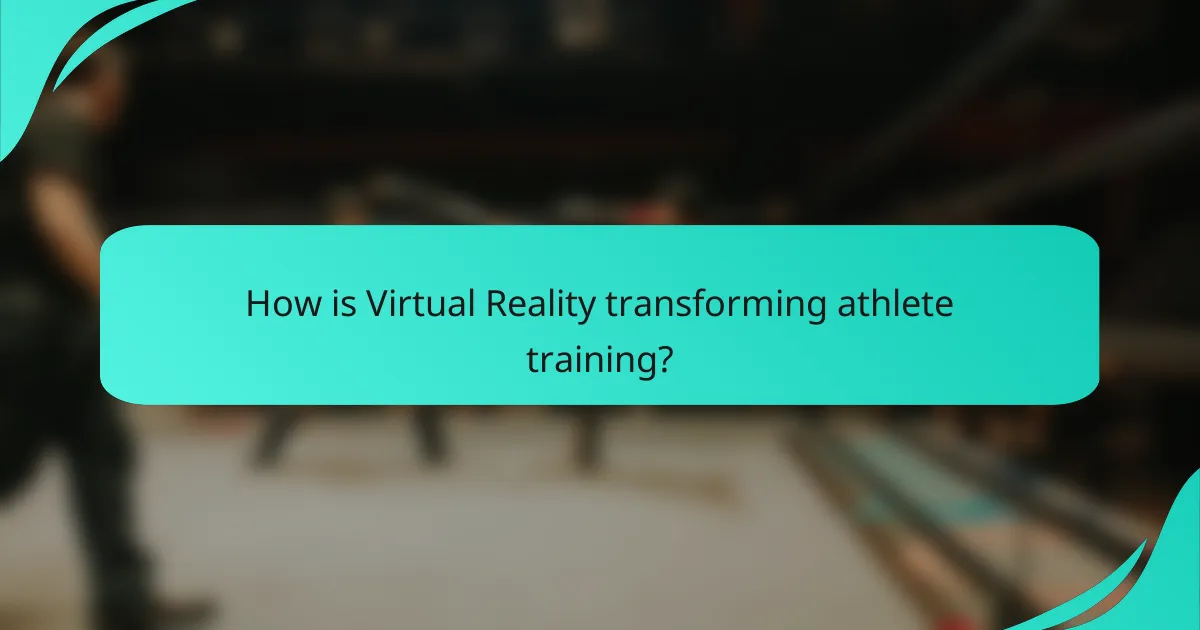
How is Virtual Reality transforming athlete training?
Virtual Reality (VR) is revolutionizing athlete training by providing immersive environments that enhance learning and performance. With VR, athletes can practice skills and strategies in realistic settings, leading to improved outcomes and engagement.
Enhanced skill acquisition
VR facilitates enhanced skill acquisition by allowing athletes to repeatedly practice techniques in a controlled environment. This repetition helps in muscle memory development and cognitive understanding of complex movements.
For instance, a basketball player can practice shooting from various angles without the pressure of a live game. This method accelerates learning and allows for immediate feedback, which is crucial for skill development.
Realistic game simulations
Realistic game simulations in VR create scenarios that mimic actual competition, enabling athletes to experience game-like situations without physical strain. These simulations can replicate different opponents, weather conditions, and game strategies.
For example, a soccer player can engage in a virtual match against a variety of teams, enhancing their tactical awareness and decision-making skills. This immersive experience prepares athletes for real-world challenges by improving their situational responses.
Performance analytics integration
Integrating performance analytics with VR training provides athletes with valuable insights into their strengths and weaknesses. This data-driven approach allows for tailored training regimens based on individual performance metrics.
By analyzing metrics such as reaction times, accuracy, and decision-making speed, coaches can adjust training programs to focus on areas needing improvement. This targeted approach maximizes training efficiency and effectiveness, leading to better overall performance.
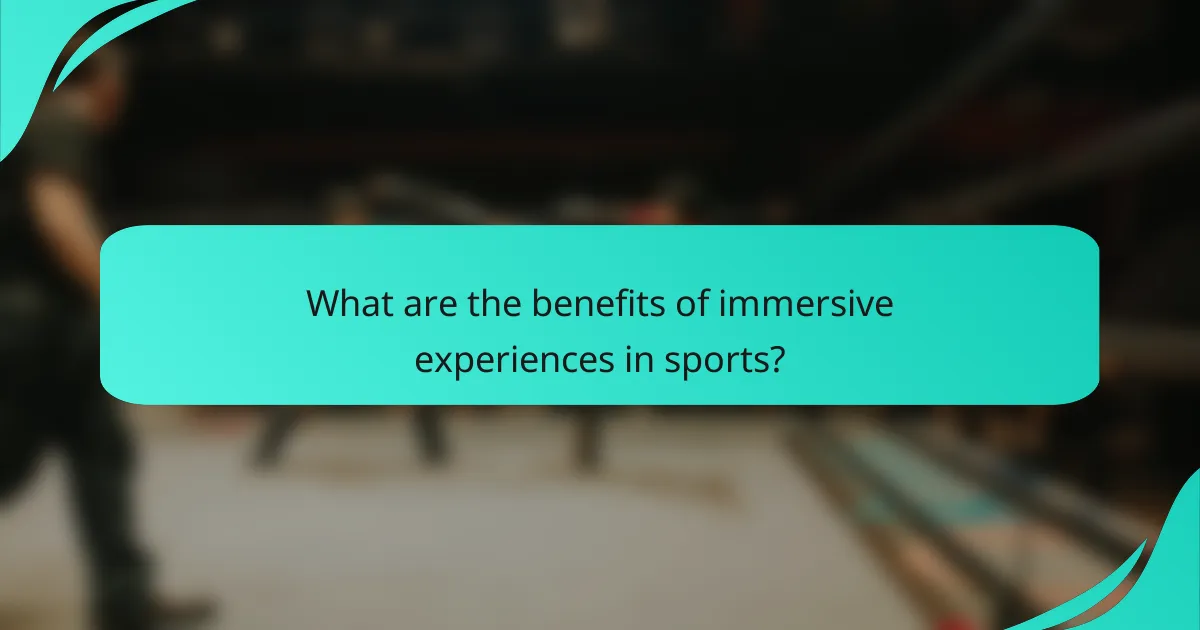
What are the benefits of immersive experiences in sports?
Immersive experiences in sports offer significant advantages, including heightened engagement, better retention of training material, and improved mental preparation. These benefits can enhance an athlete’s performance and overall experience in their sport.
Increased engagement
Immersive experiences captivate athletes by creating realistic scenarios that mimic actual game situations. This engagement can lead to a deeper emotional connection with training, making it more enjoyable and motivating.
For instance, virtual reality (VR) simulations allow athletes to practice in a controlled environment that replicates the pressures of competition. This not only keeps them interested but also encourages consistent practice, which is crucial for skill development.
Improved retention of training material
Using immersive technology can significantly enhance the retention of training material. When athletes engage with content in a dynamic and interactive way, they are more likely to remember techniques and strategies.
Research indicates that experiential learning, such as VR training, can improve retention rates by up to 80% compared to traditional methods. This means athletes can recall critical information more effectively during actual competitions.
Enhanced mental preparation
Mental preparation is vital in sports, and immersive experiences can help athletes visualize and rehearse their performance. By simulating high-pressure situations, athletes can develop coping strategies and improve their focus.
For example, VR can be used to recreate the atmosphere of a championship game, allowing athletes to practice their responses to stress. This mental rehearsal can lead to increased confidence and better performance under pressure.
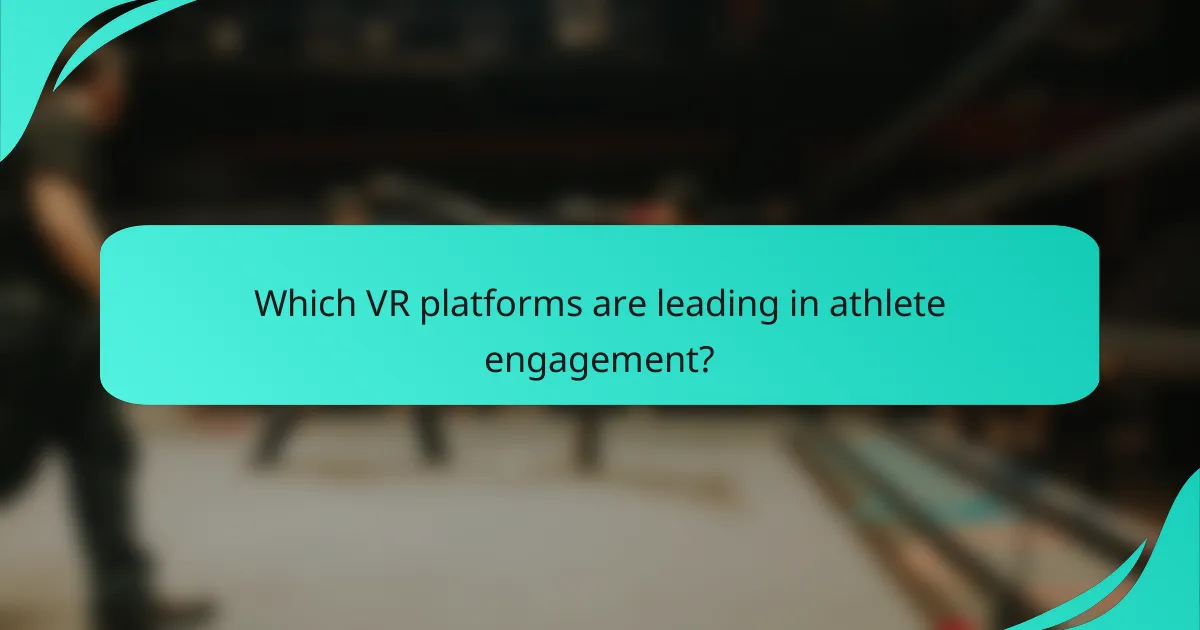
Which VR platforms are leading in athlete engagement?
Several VR platforms are at the forefront of enhancing athlete engagement through immersive training experiences. STRIVR, Vicon, and Unity each offer unique features that cater to the needs of athletes and coaches, improving performance and engagement levels.
STRIVR
STRIVR specializes in virtual reality training solutions for sports teams, focusing on immersive experiences that replicate real-game scenarios. By using 360-degree video and interactive simulations, athletes can practice decision-making and situational awareness in a controlled environment.
Teams utilizing STRIVR have reported improved retention of game strategies and enhanced performance during actual competitions. The platform is particularly effective for sports like football and basketball, where quick decision-making is crucial.
Vicon
Vicon offers a comprehensive motion capture system that integrates with VR to provide detailed analysis of athlete movements. This platform is beneficial for biomechanics studies, allowing coaches to assess and refine an athlete’s technique in real-time.
Using Vicon, teams can create tailored training programs based on precise data, helping athletes improve their performance metrics. The combination of VR and motion capture technology provides a unique advantage in sports like gymnastics and track and field.
Unity
Unity is a versatile game development platform that supports the creation of custom VR training applications for athletes. Its user-friendly interface allows developers to design simulations that can address specific training needs, making it highly adaptable for various sports.
By leveraging Unity, teams can create engaging and interactive training environments that keep athletes motivated. This platform is particularly useful for developing skills in sports that require strategic thinking, such as soccer and hockey.
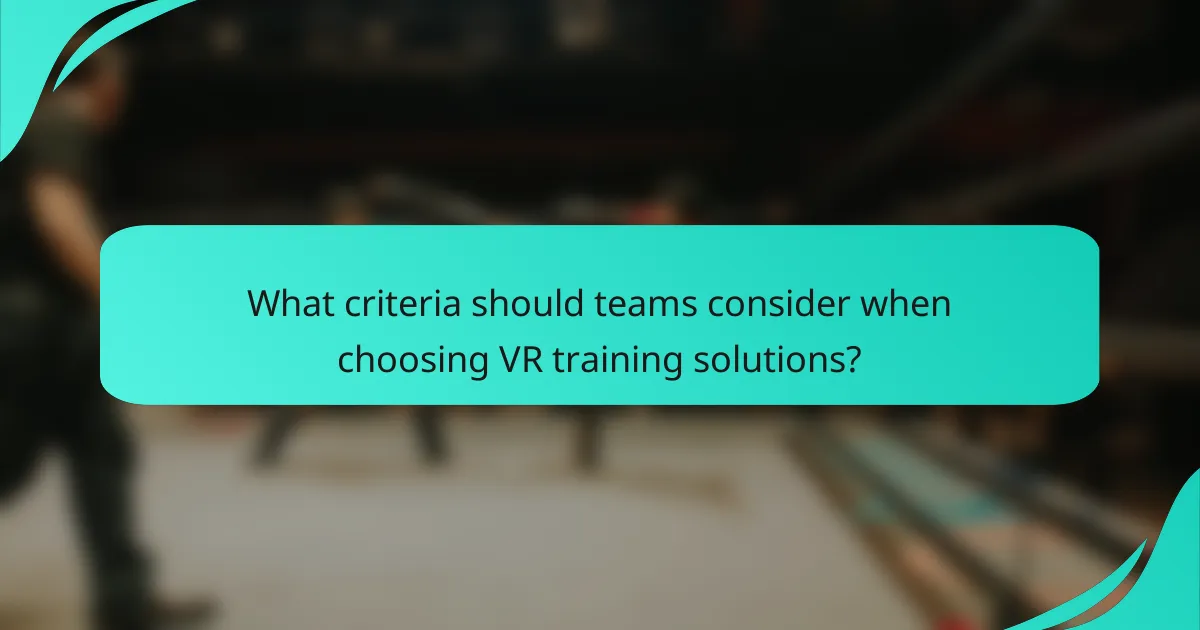
What criteria should teams consider when choosing VR training solutions?
Teams should evaluate VR training solutions based on cost-effectiveness, customization options, and user-friendliness. These criteria ensure that the chosen solution meets the team’s budget, specific training needs, and ease of use for athletes.
Cost-effectiveness
Cost-effectiveness is crucial when selecting VR training solutions, as teams must balance quality with budget constraints. Solutions should provide a clear return on investment, whether through improved performance, reduced training time, or lower injury rates.
Consider both initial costs and ongoing expenses, such as software updates and maintenance. A solution priced in the low thousands of USD may be more beneficial than a higher-priced option if it delivers superior results.
Customization options
Customization options allow teams to tailor VR training experiences to their specific needs, enhancing the relevance and effectiveness of the training. Look for solutions that offer adjustable scenarios, player roles, and performance metrics that align with the team’s objectives.
For instance, a soccer team may benefit from a VR system that simulates various game situations, allowing players to practice decision-making in diverse contexts. Ensure the platform can adapt as training needs evolve over time.
User-friendliness
User-friendliness is essential for ensuring that athletes can quickly engage with the VR training system without extensive technical support. A straightforward interface and intuitive controls can significantly enhance the training experience.
Evaluate the learning curve associated with the VR solution. Ideally, athletes should be able to start training within minutes of setup. Solutions that require minimal training for coaches and players are often more effective in maintaining engagement and consistency.
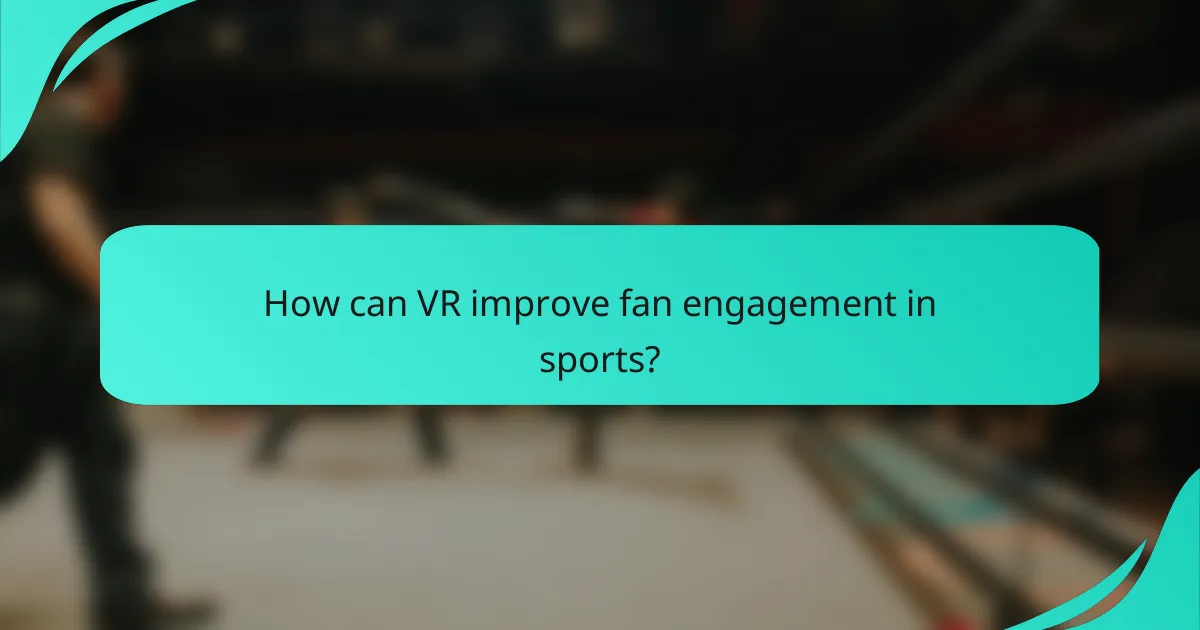
How can VR improve fan engagement in sports?
Virtual reality (VR) enhances fan engagement in sports by creating immersive experiences that allow fans to feel closer to the action. Through innovative technologies, fans can experience games from unique perspectives, interact with content, and participate in activities that deepen their connection to teams and athletes.
Virtual stadium experiences
Virtual stadium experiences allow fans to attend games from the comfort of their homes while feeling as if they are in the arena. Using VR headsets, fans can explore 360-degree views of the stadium, interact with other fans, and even enjoy exclusive behind-the-scenes content. This technology can simulate the atmosphere of live events, making fans feel more connected to their teams.
For example, some platforms offer virtual seats that replicate the view from specific sections of a stadium, allowing fans to choose their preferred vantage point. This can be particularly appealing for fans unable to afford high-priced tickets or those living far from their favorite teams.
Interactive game analysis
Interactive game analysis through VR provides fans with a deeper understanding of gameplay and strategies. By immersing themselves in the action, fans can analyze plays from the perspectives of players and coaches, enhancing their appreciation of the sport. This engagement can lead to a more informed and passionate fan base.
Some VR applications allow fans to pause and replay critical moments, giving them the ability to dissect strategies and player movements. This interactive approach not only entertains but also educates fans, making them feel more involved in the sport.
